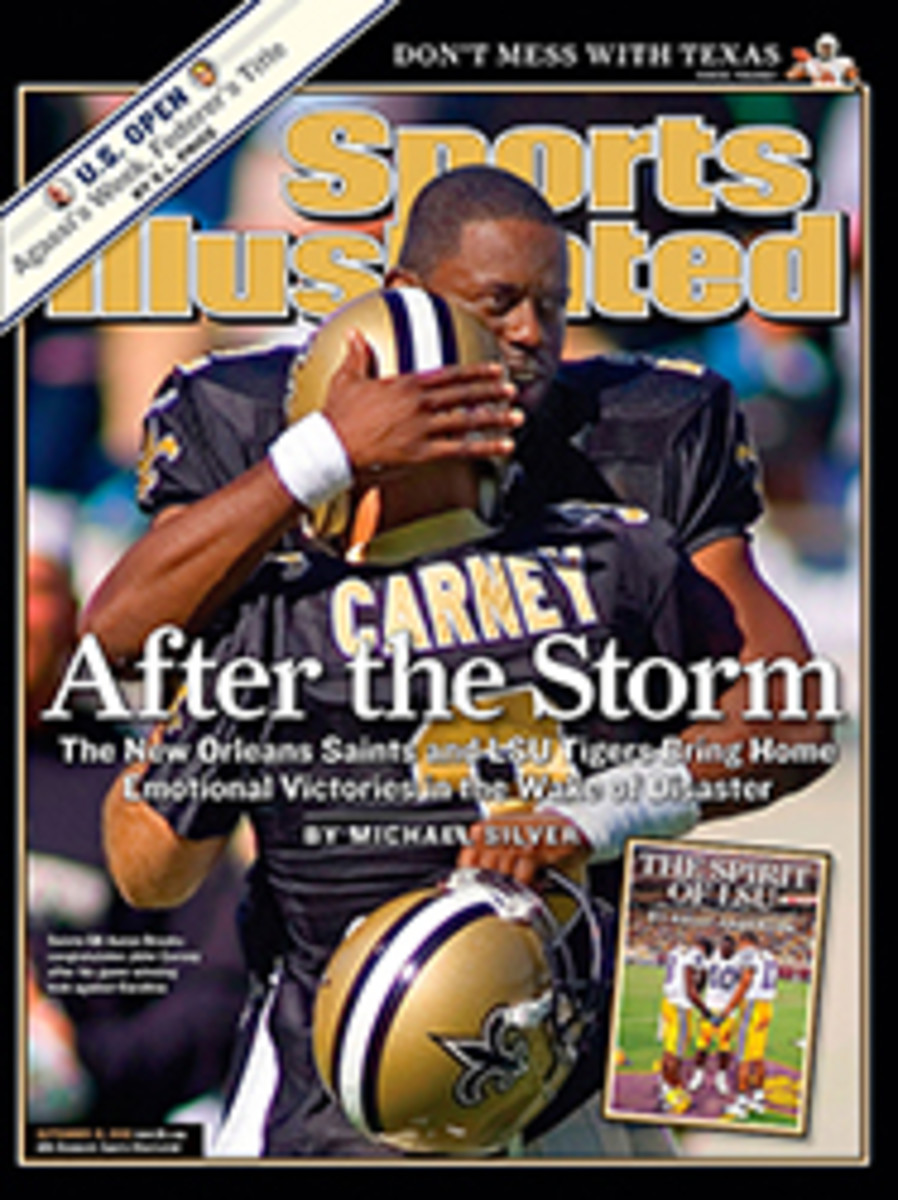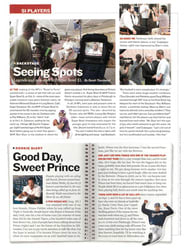
Two for the Ages
AMERICA ON THE ROPES: A PICTORIAL HISTORY OF THE JOHNSON-JEFFRIES FIGHT
By Wayne A. Rozen
Casey Press LLC, 324 pages, $70
BEYOND GLORY: JOE LOUIS VS. MAX SCHMELING AND A WORLD ON THE BRINK
By David Margolick
Alfred A. Knopf, 348 pages, $26.95
It is hard to imagine any sporting event these days (at least any not involving a cameo by Janet Jackson's breast) having a real impact on American society. Despite the occasional BALCO scandal, today's games and matches are fodder really only for the sports pages, not for the pages of history. But as two new superbly researched books make clear, there was a time when a single athletic contest could galvanize the nation, and even the world.
That the two events were prizefights should be no surprise. Today boxing is marginalized, the stuff of niche pay-per-view telecasts or failed reality shows, but for the first half of the 20th century the sport was rivaled in popularity and importance only by baseball, and no athlete stood taller than the heavyweight champion. Further, as David Margolick writes in the introduction to Beyond Glory, "Unique among the sports, boxing seemed to crystallize the ethnic, racial and political tensions of a culture."
In America on the Ropes, Wayne Rozen vividly conveys just how explosive those tensions were in the U.S. when Jack Johnson and James J. Jeffries faced off before 15,000 spectators in Reno on July 4, 1910. For months the nation's papers--front pages and editorial columns as well as sports sections--had been filled with previews of the event and heated analysis of its racial implications. And after Johnson, the first black boxer to hold the heavyweight crown, knocked out Jeffries, the former champion who had been coaxed from retirement to assume the mantle of Great White Hope, race riots erupted across the country, claiming more than a dozen lives.
While Geoffrey Ward's biography of Johnson, Unforgivable Blackness (published last year), is likely to remain the definitive work on the controversial champion's life and times, America on the Ropes--a heavyweight in its own right at 324 oversized, handsomely illustrated pages--is a valuable companion. Rozen spins an engaging account of events leading up to the bout and of the fight itself. Far more compelling, though, are the scores of images he has collected. There are photographs of Johnson and Jeffries in training, as well as riveting shots of the brutal action in the ring. One particularly striking photo shows Johnson, relaxed and grinning, as he manhandles the battered Jeffries.
Most startling, however, are a number of racist cartoons--including several by Rube Goldberg--which, in their depiction of Johnson, convey far more effectively than any narrative the appalling bigotry of the era.
In Beyond Glory, Margolick, a contributing editor for Vanity Fair, delivers a consistently engaging account of another racially charged clash for the heavyweight title 28 years after Johnson-Jeffries. When Joe Louis, the first black heavyweight champion since Johnson, defended his crown against former champ Max Schmeling of Germany, on June 22, 1938, the match was widely viewed as a stand-in for the looming world war--America's Brown Bomber punching away for democracy against Hitler's pugilistic storm trooper. To his credit, Margolick goes beyond those loaded symbols to bring alive the complex characters of the fighters, two men whose showdown on the world stage would lead to a lifelong friendship. In a Seabiscuit-like turn, Margolick also captures what life was like in a very different time, when Americans were still struggling through the Depression and when they were just starting to come to terms with a burgeoning civil rights movement. And when a single sporting event could matter so much.
Gym Dandy
SHADOW BOXERS: SWEAT, SACRIFICE & THE WILL TO SURVIVE IN AMERICAN BOXING GYMS
Edited by John Gattuso
Stone Creek Publications, Inc.; 176 pages, $39.95
IT IS among the most familiar settings in sports: an airless, low-ceilinged space with posters of old champs on the wall, the rat-a-tat of the speed bag, the thuds and grunts of fighters in the ring, the growled instructions from old trainers--and of course the smell, usually referred to as "the smell of sweat and violence." We all know what it's like in a boxing gym, right? Actually, we don't. Most fans have never set foot in one, and the only trainers we know have been played by Burgess Meredith or Clint Eastwood.
Which is what makes Shadow Boxers so surprising and so welcome. At the core of the book are 169 evocative photographs by Jim Lommasson, taken over the course of a decade in gyms from Vancouver to Baltimore. In portraits and candid shots, of pros and amateurs and youngsters who can't even reach the speed bag, Lommasson reveals not just the grit and toil of a disappearing world, but also an unexpected sense of community and even of sanctuary.
As Katherine Dunn puts it in one of 24 accompanying essays by an eclectic, hard-punching stable of writers (including Carlo Rotella and the late Ralph Wiley), "[Fighters] are drawn first to the toughness, wanting strength and skill to defend themselves against the outside world. But they stay for the secret tenderness at the heart of every good boxing gym."
While Shadow Boxers never blinks at the toughness, it does take the reader straight to that heart.
PHOTO
LAST LEGS
Jeffries (right) came out of retirement, only to be knocked out by Johnson.
TWO PHOTOS

